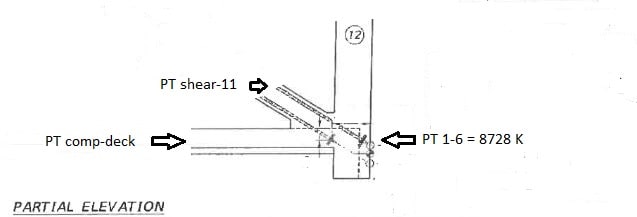jrs87, there’s way too many unnecessary sentences in that article , but a few comments:
[blue]”While the exact cause of this astonishing bridge collapse and horrific tragedy is not yet known” …. [/blue]
yet:
[blue]“Secondly, no new, previously unknown, engineering principle or precept will be learned or discovered here concerning the exact cause or failure mechanism.
We will only learn how known, well-understood, engineering principles or precepts were somehow violated leading to this sudden bridge collapse.”[/blue]
So the cause is not known yet – but he knows that we won’t learn anything new from it.
[blue] “The structural design concept of the bridge decks mainly involved a concrete truss reinforced by post-tensioned steel tendons. A 109-foot high central pylon, yet to be constructed, would have added more steel cables, and thus more stability, to the overall structure.”[/blue]
The cables were aesthetic – as this series of threads has revealed – so this forensic engineer is discussing something he isn’t very familiar with.
[blue] “However, it is entirely fair to begin asking some very crucial questions about what, as engineers and builders, we should be focusing on during the investigation and what things we may need to modify or change as a result of this tragedy to prevent something like this from ever happening again.”[/blue]
Tragedies won’t be “prevented” by “modifying things” – we only can attempt to minimize the future risk.
[blue] “But, the most important and crucial take-away is that this tragedy should never have been allowed to happen in the first place and cannot be allowed to occur again in the future.”[/blue]
Let’s make a law against this sort of tragedy shall we?
Check out Eng-Tips Forum's Policies here:
faq731-376

